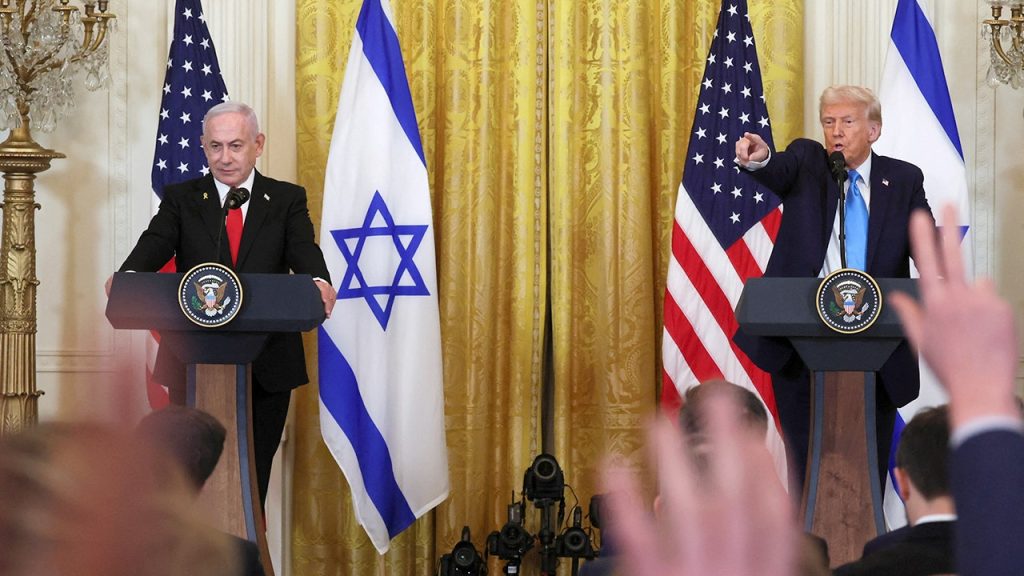President Donald Trump’s unexpected declaration to take over the Gaza Strip has dramatically reshaped the United States’ role in the Middle East, signaling a significant departure from previous administrations’ policies. This bold move comes amidst the ongoing conflict between Israel and Hamas, nearly 16 months after Hamas’s devastating surprise attacks in October 2023. Trump’s proposal outlines a comprehensive plan not only for assuming control of Gaza but also for its reconstruction and economic revitalization. This involves dismantling unexploded ordnance, leveling destroyed buildings, and creating job opportunities and housing for the local population. The stated goal is to transform Gaza into a thriving economic hub, offering a more hopeful future for Palestinians.
This unprecedented move by the U.S. government has been met with diverse reactions, ranging from cautious optimism to outright skepticism. Supporters view it as a decisive step towards resolving the long-standing conflict and addressing the dire humanitarian situation in Gaza. They point to Trump’s previous success with the Abraham Accords, which fostered peaceful relations between Israel and several Arab nations, as evidence of his potential to achieve similar progress in this context. The Abraham Accords, initiated during Trump’s first term, normalized relations between Israel and the United Arab Emirates, Bahrain, Sudan, and Morocco, with potential expansion to include Saudi Arabia anticipated. This framework for peace was seen as a major breakthrough in regional diplomacy and a testament to Trump’s ability to broker agreements between historically adversarial parties.
Conversely, critics express concerns about the potential ramifications of a U.S. takeover of Gaza, questioning its feasibility and long-term consequences. Some argue that it could exacerbate tensions in the region and further inflame anti-American sentiment. Moreover, the potential for unintended consequences and the significant financial and logistical burden on the U.S. remain key considerations. The complex political landscape of the region and the deeply entrenched hostility between Israel and Hamas raise doubts about the likelihood of achieving sustainable peace through direct intervention.
The timing of this announcement coincides with Israeli Prime Minister Benjamin Netanyahu’s visit to Washington, D.C., marking the first foreign dignitary to be invited to the White House since Trump’s recent election. This underscores the close alignment between the U.S. and Israel on this issue and signals a coordinated effort in addressing the ongoing conflict. Furthermore, Trump’s decision to end U.S. engagement with the UN Human Rights Council (UNHRC) and the UN Relief and Works Agency (UNRWA) signifies a shift in the U.S.’s relationship with these international bodies. Trump characterized the UNHRC as “antisemitic,” citing concerns over its bias against Israel. His administration had previously withdrawn from the UNHRC in his first term, a decision reversed by the Biden administration. The funding for UNRWA was also halted by the Biden administration following allegations of staff involvement in the October 2023 attacks and reports of Hamas denying medical care to hostages held in UNRWA facilities.
The proposed takeover of Gaza undoubtedly presents a complex challenge for the U.S. The task of rebuilding the war-torn region, addressing the humanitarian needs of the population, and fostering economic development will require significant resources and commitment. Furthermore, the political dynamics of the region and the deeply rooted conflict between Israel and Hamas will make achieving lasting stability a formidable undertaking. The long-term success of this endeavor hinges upon a multitude of factors, including the cooperation of regional actors, the effectiveness of economic development initiatives, and the ability to address the underlying causes of the conflict.
Trump’s Middle East envoy has emphasized that the Gaza takeover proposal aims to provide more hope for the future of Palestinians. The intention is to create a more stable and prosperous environment, allowing for the development of a sustainable economy and improved living conditions. The success of this ambitious endeavor will ultimately depend on the U.S.’s capacity to navigate the intricate political landscape, manage the logistical challenges, and foster cooperation among the various stakeholders involved. The international community will be closely watching the unfolding of this situation, as it holds significant implications for the future of the Middle East and the broader geopolitical landscape.

